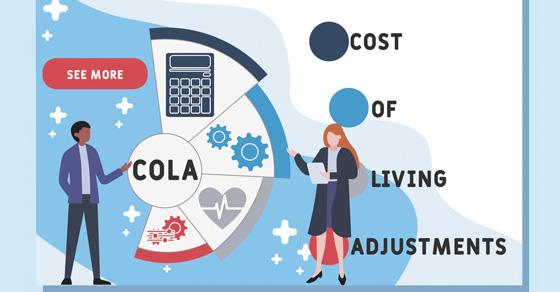
2025 Fringe Benefit COLAs: Key Figures for Employers
Annually, the IRS makes inflation-based cost-of-living adjustments (COLAs) to dollar limits applicable to many employer-sponsored fringe benefits for the upcoming year. Sure enough, in November, the tax agency published its COLAs in IRS Notice 2024-80. Here are some key figures to be aware of heading into 2025:
Qualified Small Employer Health Reimbursement Arrangements (QSEHRAs). The maximum payments and reimbursements under a QSEHRA will be $6,350 for self-only coverage and $12,800 for family coverage (up from $6,150 and $12,450, respectively, in 2024).
Health Flexible Spending Accounts (FSAs). For 2025, the dollar limit on employee salary reduction contributions to health FSAs will be $3,300 (up from $3,200 in 2024). In cases where a cafeteria plan allows carryovers of health FSA balances, the maximum amount from 2025 that can be carried over to the 2026 plan year will be $660 (up from the $640 that can be carried over to the 2025 plan year).
Pension-Linked Emergency Savings Accounts (PLESAs). The Secure 2.0 Act of 2022 authorized the addition of PLESAs to eligible employer-sponsored defined contribution plans, such as 401(k)s. These accounts allow participants to save for financial emergencies, so they don’t have to draw from their retirement plans following a crisis. For 2025, the contribution limit to PLESAs will remain unchanged at $2,500.
Benefits under a dependent care assistance program (DCAP). The DCAP limit isn’t adjusted for inflation so, for 2025, it will remain at $5,000 for single taxpayers and married couples filing jointly, or $2,500 for married people filing separately. These dollar amounts will apply in future years, too, unless they’re changed by Congress.
That said, some adjustments to certain general tax limits are relevant to calculating one’s federal income tax savings under a DCAP. These include the 2025 tax rate tables, earned income credit amounts and the standard deduction.
Adoption assistance exclusion and adoption credit. Under an employer-provided adoption assistance program, the maximum amount that may be excluded from a participant’s gross income for adopting a child will be $17,280 (up from $16,810 in 2024). The maximum adoption credit a participant may claim will also be $17,280.
The adoption exclusion and credit are subject to an income-based phaseout. The phaseout begins to kick in when a participant’s modified adjusted gross income exceeds $259,190 (up from $252,150 in 2024). The exclusion and credit are entirely phased out for individuals with modified adjusted gross incomes of $299,190 or more (up from $292,150 in 2024).
Qualified transportation fringe benefits. The monthly limit on the amount that may be excluded from an employee’s income for qualified parking benefits will be $325 (up from $315 in 2024). The combined monthly limit for transit passes and vanpooling expenses will also be $325.
Employers have two primary jobs related to these and other COLAs: 1) Be aware of how they’ll impact your fringe benefits, and 2) Communicate the changes to your employees. The latter point is particularly important if you’re revising whether and how you’ll offer certain fringe benefits in 2025. We can help you identify and evaluate all the COLAs affecting your organization’s benefits menu.
© 2024